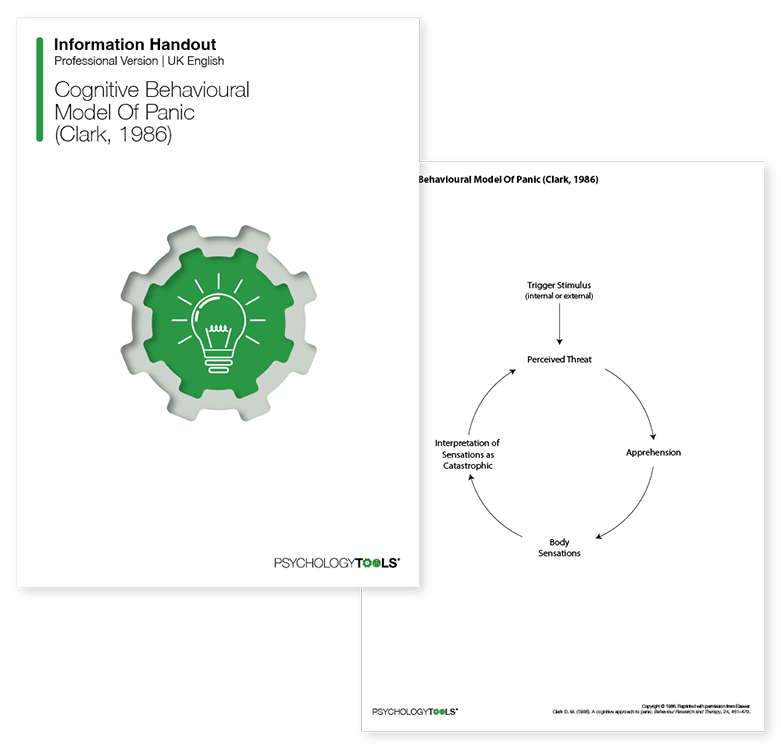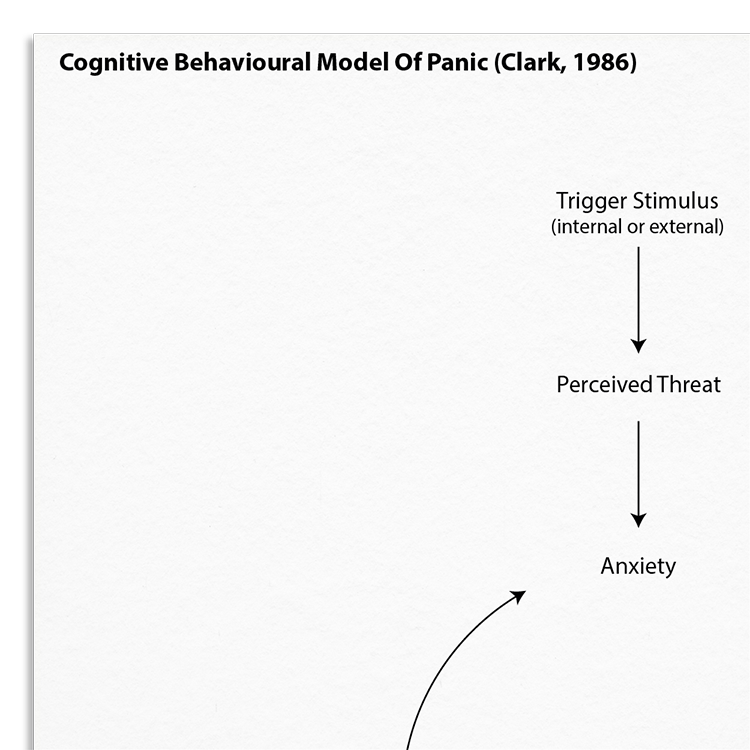Professional version
Offers theory, guidance, and prompts for mental health professionals. Downloads are in Fillable PDF format where appropriate.
A licensed copy of Clark's (1986) cognitive-behavioral model of panic that outlines a framework to address the key components of panic disorder.

Offers theory, guidance, and prompts for mental health professionals. Downloads are in Fillable PDF format where appropriate.

The Cognitive Behavioral Model Of Panic identifies catastrophic misinterpretation of body sensations as a criticial maintenance factor which serves to exacerbate and prolong panic.
Understanding the underpinnings of panic disorder is important for effective intervention. This resource helps clinicians:
Ideal for mental health professionals working with clients experiencing panic disorder and panic attacks.
Understand more about the cognitive behavioral model of panic.
Use the model as a template to organize your case formulations.
Use your knowledge of the model to explain maintenance processes to clients.
Engage clients in discussions about their beliefs and behaviors.
Customize interventions based on individual maintenance mechanisms.
Use in supervision to discuss case conceptualizations and treatment plans.
This handout presents Clark's (1986) Cognitive Behavioral Model Of Panic. The expanded model identifies the critical mechanisms of panic which include: catastrophic misinterpretation of bodily sensations (which lead to a feeling of anxiety and exacerbation of bodily symptoms) and safety-seeking behaviors (which prevent disconfirmation of threat beliefs).

Just enter your name and email address, and we'll send you Cognitive Behavioral Model Of Panic (Clark, 1986) (English US) straight to your inbox. You'll also receive occasional product update emails wth evidence-based tools, clinical resources, and the latest psychological research.
Working...
This site uses strictly necessary cookies to function. We do not use cookies for analytics, marketing, or tracking purposes. By clicking “OK”, you agree to the use of these essential cookies. Read our Cookie Policy